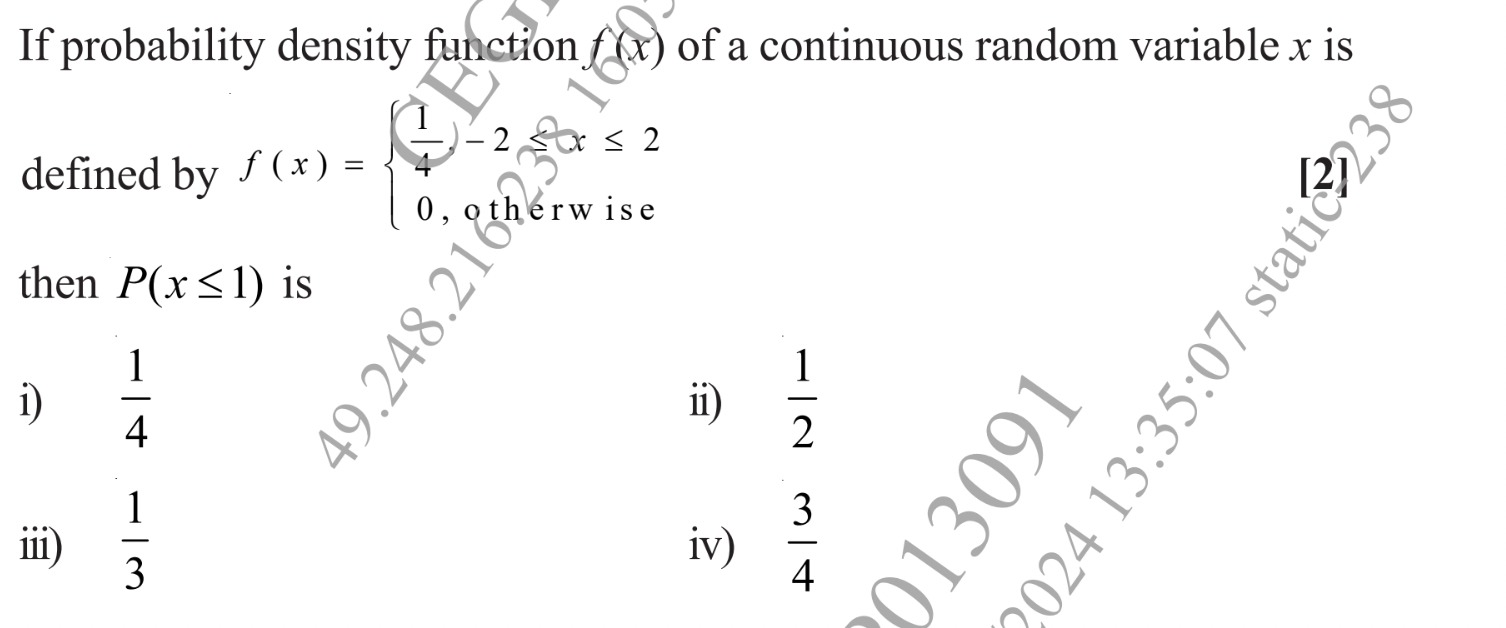Question
Question: If probability density function $f(x)$ of a continuous random variable $x$ is defined by $f(x) = \be...
If probability density function f(x) of a continuous random variable x is defined by f(x)={41,−2≤x≤20,otherwise then P(x≤1) is

A
41
B
21
C
31
D
43
Answer
43
Explanation
Solution
The probability density function (PDF) is given by:
f(x)={41,0,−2≤x≤2otherwise
We need to find the probability P(x≤1). For a continuous random variable, P(x≤1) is the integral of the PDF from −∞ to 1. Since f(x) is non-zero only for −2≤x≤2, we integrate from -2 to 1:
P(x≤1)=∫−21f(x)dx=∫−2141dx
Evaluating the integral:
P(x≤1)=41∫−21dx=41[x]−21=41[1−(−2)]=41(3)=43
Therefore, P(x≤1)=43.
